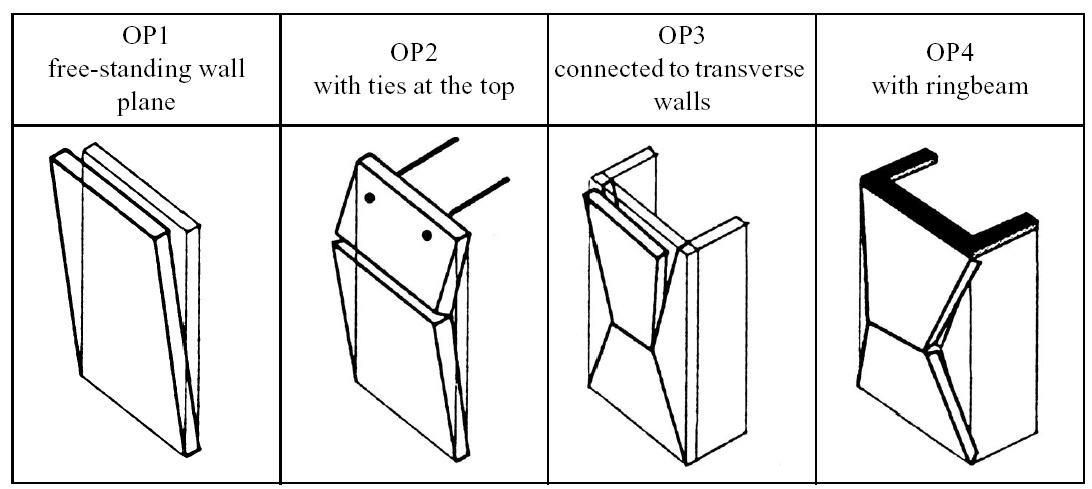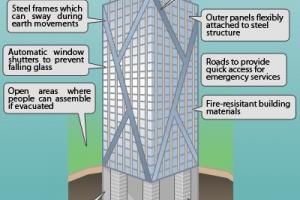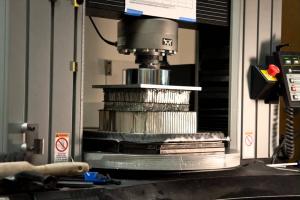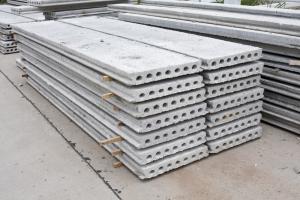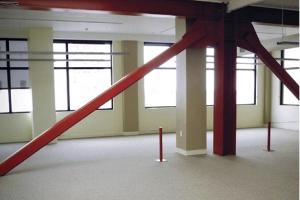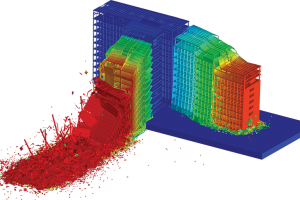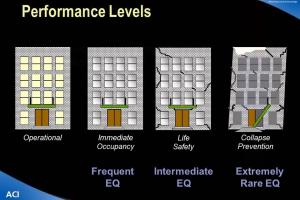Seismic Vulnerability Assessment of Structures
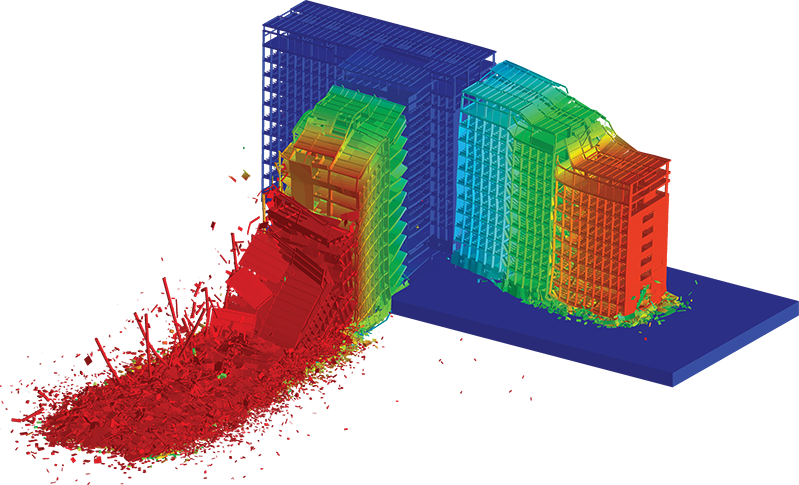
Process of Seismic Vulnerability Assessment of Structures
Seismic vulnerability assessment is a critical process that helps evaluate the potential susceptibility of structures to damage or failure during seismic events. It involves assessing various structural elements and systems to identify weaknesses and vulnerabilities. Here are the key components of seismic vulnerability assessment for structures:
1. Structural Analysis:
Structural analysis is performed to evaluate the capacity of the structure to resist seismic forces. This involves analyzing the load paths, distribution of forces, and response characteristics of the building. Both static and dynamic analyses may be conducted using computer modeling and simulation techniques to determine the structural behavior under seismic loads.
2. Building Materials and Construction:
The assessment considers the type of materials used in the construction of the structure, such as concrete, steel, masonry, or wood. The properties of these materials, including their strength, ductility, and compatibility with seismic forces, are evaluated. The construction quality and techniques used are also examined to identify potential weaknesses or deficiencies.
3. Seismic Code Compliance:
The assessment checks if the structure was designed and constructed in compliance with applicable seismic design codes and regulations. It evaluates whether the building adheres to the required standards for structural strength, load resistance, and detailing of critical components. Non-compliance with seismic codes can significantly increase the vulnerability of a structure.
4. Geotechnical Considerations:
Geotechnical factors play a crucial role in assessing seismic vulnerability. The assessment considers the soil type, ground conditions, and site-specific characteristics. Soil liquefaction potential, soil amplification effects, and slope stability are analyzed to determine their influence on the structural behavior during an earthquake.
5. Structural Vulnerabilities:
The vulnerability assessment identifies specific vulnerabilities within the structure that may contribute to its seismic vulnerability. This includes weak connections, inadequate bracing, insufficient lateral load resistance, and insufficient ductility. Vulnerabilities related to non-structural elements, such as partitions, facades, and utility systems, are also considered.
6. Performance Evaluation:
The assessment evaluates the expected performance of the structure during different levels of seismic events. It considers factors such as the maximum anticipated earthquake intensity, ground motion parameters, and the building's response characteristics. The goal is to determine the potential damage levels, including localized damage, partial collapse, or total collapse.
7. Retrofitting Recommendations:
Based on the vulnerability assessment findings, retrofitting recommendations are provided to mitigate the identified weaknesses. These recommendations may involve strengthening critical structural elements, enhancing connections, adding lateral bracing systems, or implementing other retrofit measures to improve the overall seismic performance of the structure.
8. Cost-Benefit Analysis:
A cost-benefit analysis is conducted to assess the economic feasibility of implementing the recommended retrofit measures. It considers the estimated costs of retrofitting compared to the potential benefits in terms of increased safety, reduced damage, and prolonged lifespan of the structure. This analysis helps prioritize and determine the most effective retrofitting strategies.
Seismic vulnerability assessment is a complex process that requires expertise in structural engineering, geotechnical engineering, and seismic analysis. Professional structural engineers, in consultation with geotechnical experts, conduct detailed assessments to identify vulnerabilities and provide appropriate retrofitting solutions to enhance the seismic resilience of structures.
Methods of Seismic Vulnerability Assessment of Structures
Experimental testing may be adequate to determine the seismic performance of a single building. However, it is not feasible to determine the seismic performance of a building stock, located in a city, by experimentally testing their representative models. Therefore, the seismic performance of a building stock located in a city is evaluated by using a technique known as seismic risk assessment.
Seismic risk assessment can be defined as a combination of seismic hazard and vulnerability. Seismic hazard depends upon the geology of the area under consideration and is, therefore, site-specific. Seismic vulnerability depends upon:
- The material of which the structure is made.
- The mechanical properties of construction materials.
- The geometry and layout of a building and its structural components.
- The detailing of structural components as well as floor-wall connection details.
There are various approaches regarding the assessment of the seismic vulnerability of building stock. A detailed discussion on this topic is given by Lang. According to Lang, various methods for seismic vulnerability can be classified as given in Table 2.1. These methods are briefly discussed in the following sub-sections.
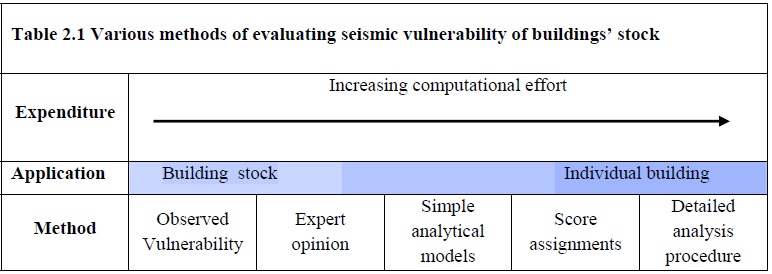
Observed vulnerability
This method of assessment is based on the statistics of the buildings' damage from past earthquakes. The method is specifically suitable for poor quality non-engineered construction whose resistance is difficult to calculate by analytical or numerical methods. The first such type of study was made by Whitman. He gathered the data on approximately 1600 buildings damaged due to the San Fernando earthquake of 9th February 1971.
Based on the gathered data, he carried out a statistical analysis and developed damage probability matrices (DPM). These DPM indicated the probability of occurrence of various distress levels at various intensities of the earthquake. Other examples of seismic vulnerability assessment, based on the observed vulnerability method also exist. The method has the disadvantage of requiring a substantial amount of data inventory.
Additionally, the analysis of the data, for the area under consideration, cannot be extended to other towns and cities. Similarly, the method does not possess the ability to calculate the reduction in vulnerability of buildings as a result of retrofitting or strengthening of buildings.
Vulnerability functions based on expert opinions
The first such kind of seismic vulnerability assessment was carried out by Applied Technology Council (ATC) under the sponsorship of the Federal Emergency Management Agency (FEMA) of the USA. The results of the study were summarized in a report (ATC 13). The ATC -13 report developed the DPM for 78 earthquake engineering facilities, out of which 40 belonged to buildings. These DPM were developed by asking 58 experts to estimate the expected percentage of damage that a specific structural type would undergo under the action of various intensities of the earthquake. Each expert was asked to fill out a comprehensive questionnaire by utilizing their best knowledge.
Since then a number of modified and improved versions of such type of a methodology have been proposed [KNKH 97, PCM 00, FKLG 01]. However, the drawback of the methodology lies in the subjective opinion. Each expert, depending upon his knowledge and engineering judgment has his own opinion. In addition, the results obtained for the target area cannot be extended to other towns and cities.
Another drawback of the observed vulnerability and expert opinion methods of vulnerability assessment is that these methods cannot be applied to areas with no past earthquake experience.
Analytical approach based on simple models
Vulnerability assessment methods of observed vulnerability or expert opinions are applicable to areas with some past earthquake experience. For other areas, analytical methods for determining seismic vulnerability are needed.
Analytical methods using simple building models are based on a small number of input parameters. Consequently, these have the advantage of analyzing a large number of buildings in a relatively short period of time. The efficiency of a method increases if the input parameters required for analyzing the buildings can properly capture the overall seismic behavior of the buildings.
One such method is developed by D'Ayala et al for earthquake loss estimation of historical towns in Europe. The method has been used for earthquake loss estimation of a case study in Alfama district, Portugal, and villages hit by the Umbria-Marche earthquakes in 1997. Two types of collapse mechanisms, namely, in-plane and, out-of-plane are considered. The potential collapse mechanism and the corresponding capacity are determined by the geometry and boundary conditions, usually based on visual observations. The in-plane and out-of-plane collapse mechanisms are further divided into various subclasses as shown in Figure 1. Each collapse mechanism is related to a damage grade recommended by European Macroseismic Scale 98.
Another such approach, applicable to both masonry and R.C. structures, was developed by Calvi and was applied to Catania City. The method only considers in-plane failure modes and ignores the possibility of out-of-plane failure of the wall. The model is based on only a few parameters such period during which the building was constructed, construction material, and the number of stories in the building.
The analysis of the building, by this method, is carried out in order to determine the displacement capacity and the displacement corresponding to various defined limit states. Whereas, the displacement demand is determined by using the displacement spectrum. The structural model of each type of building (i.e masonry or R.C) is defined by two parameters, namely, equivalent period of vibration and displacement demand reduction factor (determined by using energy dissipation characteristic of building structure)
The methods of analytical models based on simple models have the advantage of analyzing a large number of building stock in a relatively short time. However, the assumptions made for simplification purposes affect the accuracy of results.
Score assignment
This method is aimed at identifying a seismically hazardous building situated in a target area. Structural deficiencies, based on the correlation between observed damage and structural characteristics, are identified. Based on different structural deficiencies, scores are then assigned by experts.
The method serves as a first phase for screening seismically hazardous buildings in an area. Buildings with very low scores are then investigated in detail. The first such type of methodology was proposed by the Applied Technology Council. The methodology was aimed at developing a procedure for evaluating the seismic performance of existing buildings in order to identify hazardous buildings that can impose risk to human lives. Since then, a number of improved versions have been proposed.
The advantage of this method over vulnerability assessment methods based on observations and expert opinion is that vulnerability assessment of the buildings in a target area can be updated after the retrofitting or strengthening of buildings.
Detailed analysis procedures for Seismic Vulnerability of Buildings
The buildings identified as hazardous from the method of score assignment need further detailed investigation for a final decision. The method used for this purpose can be divided into two classes, namely, static and dynamic procedures. Each method can be further subdivided into two methods, namely, linear and non-linear methods. This makes a total of four methods as follows:
- Linear static procedure
- Non-linear static procedure
- Linear dynamic procedure
- Non-linear dynamic procedure
However, these methods are time-consuming and not suitable for an earthquake scenario project in which a lot of buildings need to be investigated.



